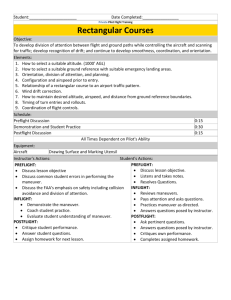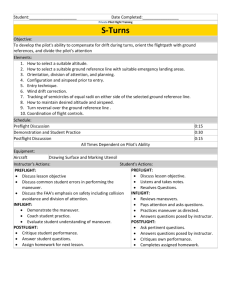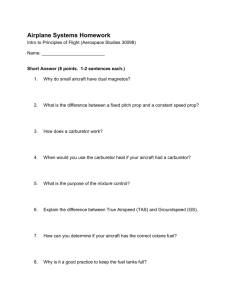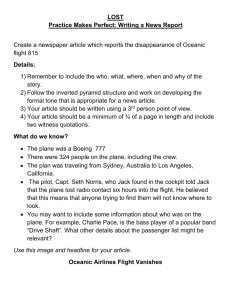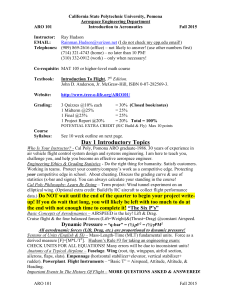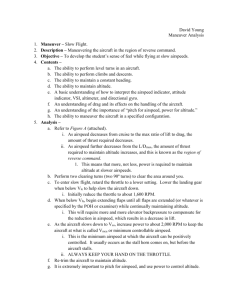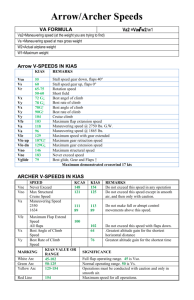Slow Flight - Philip Greenspun
advertisement
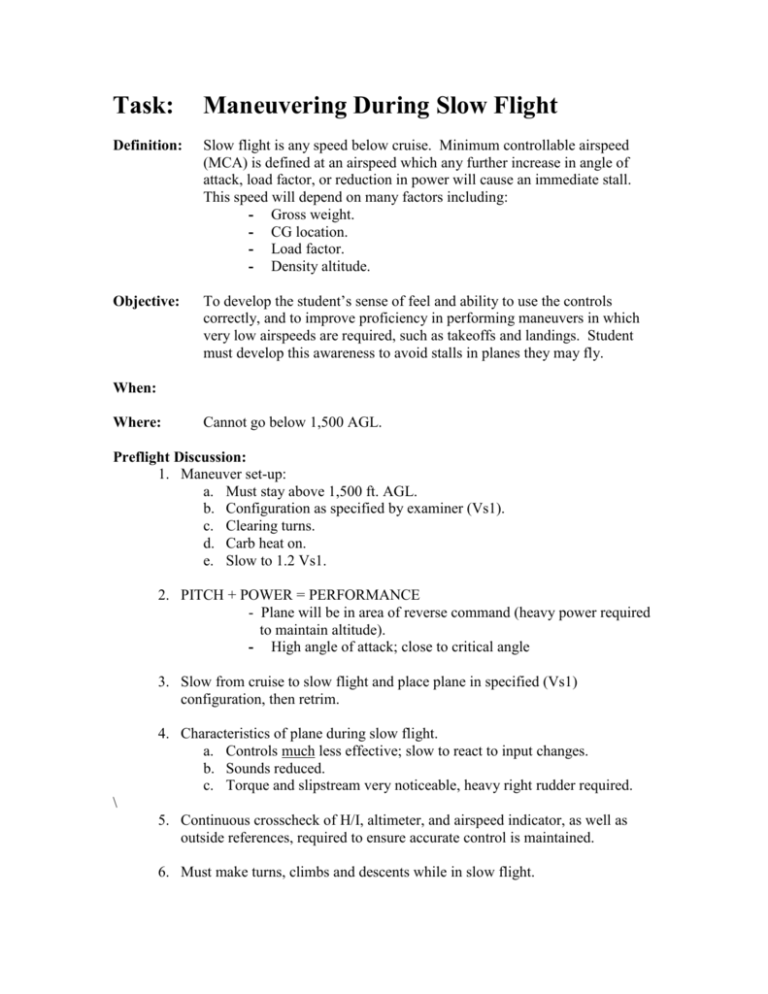
Task: Maneuvering During Slow Flight Definition: Slow flight is any speed below cruise. Minimum controllable airspeed (MCA) is defined at an airspeed which any further increase in angle of attack, load factor, or reduction in power will cause an immediate stall. This speed will depend on many factors including: - Gross weight. - CG location. - Load factor. - Density altitude. Objective: To develop the student’s sense of feel and ability to use the controls correctly, and to improve proficiency in performing maneuvers in which very low airspeeds are required, such as takeoffs and landings. Student must develop this awareness to avoid stalls in planes they may fly. When: Where: Cannot go below 1,500 AGL. Preflight Discussion: 1. Maneuver set-up: a. Must stay above 1,500 ft. AGL. b. Configuration as specified by examiner (Vs1). c. Clearing turns. d. Carb heat on. e. Slow to 1.2 Vs1. 2. PITCH + POWER = PERFORMANCE - Plane will be in area of reverse command (heavy power required to maintain altitude). - High angle of attack; close to critical angle 3. Slow from cruise to slow flight and place plane in specified (Vs1) configuration, then retrim. 4. Characteristics of plane during slow flight. a. Controls much less effective; slow to react to input changes. b. Sounds reduced. c. Torque and slipstream very noticeable, heavy right rudder required. \ 5. Continuous crosscheck of H/I, altimeter, and airspeed indicator, as well as outside references, required to ensure accurate control is maintained. 6. Must make turns, climbs and descents while in slow flight. 7. Recovery a. Apply full power and remove carb heat. b. Reduce flaps 10-degrees. c. Maintain heading and altitude. d. As airspeed increases, retract gear and any remaining flaps. e. Retrim plane for cruise flight. Instructor Demonstration: 1. Execute two clearing turns. 2. GUMPS or before-landing checklist. 3. Establish heading and altitude. 4. Demonstrates slow flight. a. Have student feel slow response of control inputs. a. Have student describe power setting used. b. Have student describe torque correction. c. Have student describe trim technique. Student Practice: 1. Use integrated technique. 2. Use verbal correction – avoid control inputs. 3. Have student explain actions during initial performance. 4. Watch for errors – correct immediately. a. Failure to establish the specified configuration b. Improper entry technique: - Difficulty going from cruise to slow flight. - Not increasing back pressure as power reduced. - Increasing back pressure too quickly. - As airspeed slows, failure to apply pitch and power to control airspeed and altitude. c. Failure to establish and maintain specified airspeed. d. Excessive variations in altitude, heading and bank. e. Rough or uncoordinated control technique. - Not recognizing and compensating for torque effect. - Overcontrolling the plane. f. Faulty trim technique. g. Unintentional stall. h. Removal of hand from throttle. 5. Review performance a. Save critique until performance complete. b. Have student repeat as necessary. Evaluation: 1. Selects an entry altitude that will allow task to be completed no lower than 1,500 ft. AGL or mfr.’s recommended. 2. Stabilizes airspeed at 1.2 Vs1, +10/-5 kts. (Private) or +/- 5 kts. (Commercial). 3. Divides attention between plane control and orientation. 4. Maintains specified altitude +/- 100 ft. (Private), or +/- 50 ft. (Commercial). 5. Maintains specified heading +/- 10 degrees (Private and Commercial). 6. Maintains specified bank angle +0/- 10 degrees (Private), or +/-10 degrees (Commercial). 7. Does not exceed bank of 20-degrees (Private).
